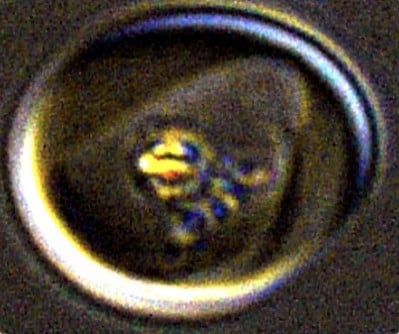UPDATE: Groundbreaking research has revealed that the deadly malaria-causing parasite, Plasmodium falciparum, contains tiny iron crystals that spin like miniature rockets. This astonishing discovery, announced by researchers at the University of Utah, sheds light on a phenomenon that has puzzled scientists for decades.
New findings confirm that the spinning motion of these crystals is driven by the breakdown of hydrogen peroxide, a chemical reaction similar to the propulsion used in rockets. The implications of this discovery could be monumental, potentially leading to new malaria treatments and advancements in nanotechnology.
Until now, the motion of these iron crystals, which are found in every cell of the parasite, remained a mystery. “The motion of these crystals is so bizarre that it has been a blind spot for parasitology for decades,” stated Paul Sigala, PhD, an associate professor of biochemistry in the Spencer Fox Eccles School of Medicine.
The research team found that when hydrogen peroxide decomposes, it releases energy that propels the crystals into a chaotic dance. “This hydrogen peroxide decomposition has been used to power large-scale rockets, but it has never been observed in biological systems,” noted Erica Hastings, PhD, a postdoctoral fellow involved in the study.
This remarkable propulsion mechanism may play a crucial role in the parasite’s survival, helping it to effectively manage toxic levels of hydrogen peroxide and efficiently store iron. Researchers suspect that the frantic motion of the crystals allows the parasite to “burn off” excess peroxide before it can inflict cellular damage.
As the research unfolds, scientists are optimistic that these insights could lead to innovative drug designs targeting this unique mechanism. “If we can block the chemistry at the crystal surface, that alone might be sufficient to kill parasites,” Sigala explained. This could pave the way for developing antimalarial drugs with significantly fewer side effects, as they would target mechanisms unique to the parasite.
The findings were published in the prestigious journal PNAS and supported by the National Institutes of Health and the Utah Center for Iron & Heme Disorders. The team believes this discovery may also inspire the design of microscopic robots for various applications, from industrial uses to targeted drug delivery.
As this research continues to develop, the potential for new malaria treatments and advanced nanotechnology represents a significant leap forward in combating one of the deadliest diseases worldwide. The urgency of these findings cannot be overstated, as the battle against malaria persists, affecting millions globally.
Stay tuned for more updates as researchers delve deeper into the implications of this revolutionary discovery.







